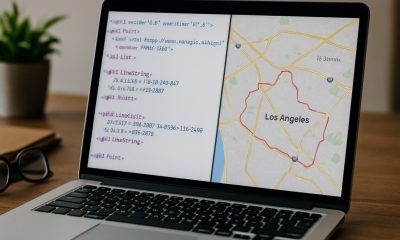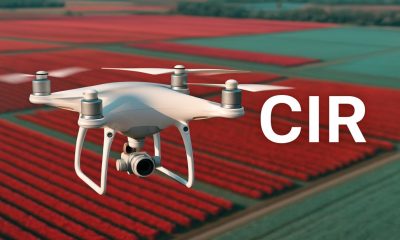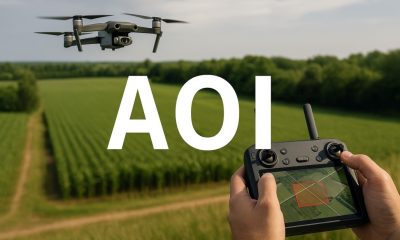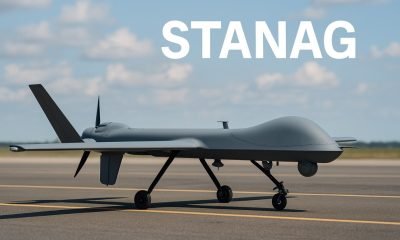- Acronym Guide
- AAM
- ABS
- AC
- ACAS
- ADS-B
- AFAC
- AGL
- AI
- AIM
- ALS
- AM
- AMA
- ANSP
- AOI
- APPI
- AUV
- AUVSI
- ARPAS-UK
- ASTM
- ATC
- BVLOS
- CAA
- CAAC
- CAB
- CASA
- CATT
- CBO
- CBR
- CBRN
- CDMA
- CDR
- CFR
- CIR
- COA
- COMINT
- CORS
- COTP
- COTR
- CPTED
- CV
- C2
- DAA
- DEM
- DFI
- DFS
- DGCA
- DHS
- DOD
- DPA
- DPEs
- DRG
- DRO
- DSM
- DSMX
- DSP
- DSSS
- DTM
- EASA
- EFT
- EO
- EOD
- EO/IR
- ELINT
- EMI
- ESC
- EVLOS
- eVTOLs
- FAA
- FCC
- FCS
- FHSS
- FICCI
- FLIR
- FOB
- FOV
- FPS
- FPV
- GBDAA
- GCP
- GCS
- GDPR
- GML
- GNSS
- GPS
- GSD
- GVC
- HDR
- HOGE
- IACRA
- ICAO
- ICS
- IMU
- INS
- IR
- ISA
- ISR
- ITU
- JARUS
- LAAMS
- LAANC
- LAATM
- LAI
- LBA
- LIDAR
- LOS
- LSALT
- MAC
- MAVLink
- MLIT
- MMS
- MSL
- MTOM
- NDAA
- NCSL
- NFZ
- NIST
- NMEA
- NOTAM
- NPA
- NPRM
- NTIA
- OBIA
- OEM
- OFDM
- OOP
- PASM
- PAV
- PCV
- PdM
- PEC
- PIC
- PID
- PIPL
- PLD
- PM
- PN
- PPK
- PPS
- PSM
- PWM
- UAM
- UAOP
- UAS
- UASTM
- UAV
- UCAVs
- UHD
- UHF
- USV
- UTM
- RAIM
- RCC
- RCS
- RFI
- ReOC
- RePL
- RMS
- ROI
- RPAS
- RPC
- RTH
- RTK
- SaR
- SAR
- SARP
- SBAS
- S.Bus
- SBIR
- SEDENA
- SfM
- SFOC
- SIGINT
- SLAM
- SMS
- SORA
- STANAG
- STTR
- sUAS
- TCAS
- TCCA
- TFR
- TIN
- TOF
- TP
- TPS
- TSA
- VHF
- VLOS
- VTOL
Drone Acronyms
What is SORA (Specific Operations Risk Assessment)?
Published
1 month agoon
By
Jacob StonerTable Of Contents

Definition
SORA, or Specific Operations Risk Assessment, is a structured methodology developed by the Joint Authorities for Rulemaking on Unmanned Systems (JARUS) to evaluate the risks associated with specific drone operations. It provides a standardized framework for determining whether a drone mission is safe and compliant based on factors like airspace complexity, ground risk, and technical mitigation measures.
Usage
Drone operators use SORA when applying for approvals to conduct complex missions—particularly those that go beyond the scope of standard permissions, such as flying BVLOS, operating in populated areas, or performing automated flights near sensitive infrastructure. Regulatory authorities in many countries, including those in the EU under EASA, use SORA as the basis for assessing whether to authorize a proposed operation.
Relevance to the Industry
SORA is central to the approval process for advanced drone operations in regulated airspace. It allows drone operators, manufacturers, and service providers to demonstrate that they have identified potential risks and applied adequate mitigation strategies. For businesses offering inspection, delivery, or surveillance services, a successful SORA can unlock permissions for flights that would otherwise be restricted.
How Does SORA (Specific Operations Risk Assessment) Work?
SORA functions as a step-by-step methodology that helps both drone operators and aviation authorities evaluate the safety of a specific drone operation. The process identifies operational risks, classifies them, and guides the applicant in selecting mitigation strategies that reduce those risks to an acceptable level. Here’s how SORA works in practice:
Define the Concept of Operations (ConOps)
The operator first outlines the full mission profile—known as the ConOps—which includes:
- The type of drone being used
- Operational purpose and location
- Flight duration, altitude, and geographic boundaries
- Airspace class and any nearby aerodromes or restricted areas
This provides regulators with a full understanding of what the operator plans to do.
Determine the Ground Risk Class (GRC)
The GRC evaluates the potential consequences of the drone falling or losing control over people or property. Factors considered include:
- Population density over the operational area
- Vehicle size, weight, and kinetic energy
- Use of safety features like parachutes, geofencing, or buffer zones
Mitigation measures can lower the GRC by reducing the likelihood or impact of a crash.
Assess the Air Risk Class (ARC)
This step considers the likelihood of a mid-air collision with other aircraft. The ARC depends on:
- The type of airspace being used
- Existing traffic density (e.g., near airports vs. rural zones)
- The drone’s capability to detect and avoid other aircraft
- Using UTM systems or flying below certain altitudes can reduce the ARC score.
Identify Strategic and Tactical Mitigations
For both ground and air risks, operators must implement safety strategies such as:
- Operational procedures (e.g., remote ID, telemetry monitoring)
- Crew training and certification
- Redundant systems (e.g., dual IMUs, backup comms)
- Technology mitigations (e.g., detect-and-avoid sensors)
Assign a Specific Assurance and Integrity Level (SAIL)
The combination of GRC and ARC results in a SAIL score ranging from I (lowest risk) to VI (highest risk). This number tells both the operator and the regulator how robust the safety case must be. Higher SAIL levels require stronger justifications, more sophisticated mitigations, and possibly independent audits or technical assessments.
Submit the Full SORA to the Regulatory Authority
Once complete, the operator submits the full risk assessment—along with documentation, maps, and mitigation plans—to the national aviation authority. The authority reviews the assessment and either approves the operation, requests changes, or denies the request based on residual risk.
By following this method, operators can gain approval for operations that exceed the limitations of standard drone categories. SORA empowers drone businesses to scale into complex missions—like BVLOS or urban operations—while maintaining structured, data-driven safety practices.
Example in Use
“To secure approval for BVLOS powerline inspections across rural terrain, the company submitted a SORA outlining their ground risk mitigation and detect-and-avoid strategy.”
Frequently Asked Questions about SORA (Specific Operations Risk Assessment)
What types of operations require a SORA?
SORA is typically required for:
BVLOS missions
Flights over people or urban areas
Operations near airports or critical infrastructure
Drone use with high payload weights or in emergency response
Is SORA only used in Europe?
No. While it originated with JARUS and is heavily adopted under EASA regulations, many non-European authorities are also aligning their frameworks with SORA principles or using SORA-like assessments as part of their approval process.
How long does it take to complete a SORA?
Depending on the complexity of the mission, a SORA may take anywhere from a few days to several weeks. It involves risk classification, mitigation planning, and coordination with the relevant aviation authority.
For examples of these acronyms visit our Industries page.
As the CEO of Flyeye.io, Jacob Stoner spearheads the company's operations with his extensive expertise in the drone industry. He is a licensed commercial drone operator in Canada, where he frequently conducts drone inspections. Jacob is a highly respected figure within his local drone community, where he indulges his passion for videography during his leisure time. Above all, Jacob's keen interest lies in the potential societal impact of drone technology advancements.











